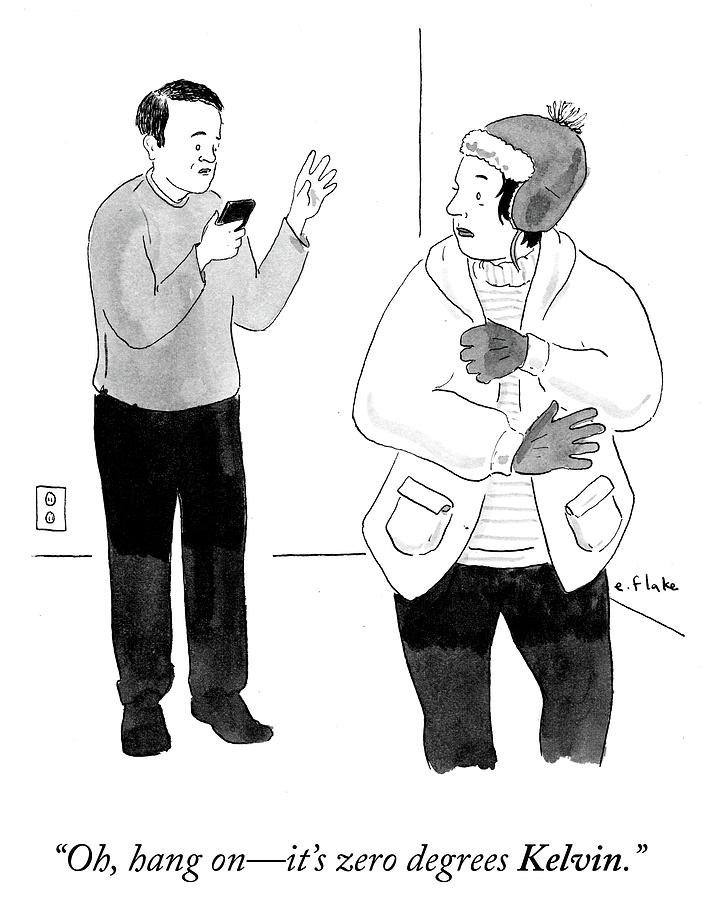
So, you did the lab, and I graded it, but here are some things that you all should be thinking about.
- All percent error calculations must have a sign. A positive sign means your measure is greater than the actual.
- A negative sign means your measure is less than the actual.
- No sign means that you are not thinking, or don’t care. Not okay.
- The freezing point represents the phase change temperature between liquid and solid. For water it’s 273 Kelvin or zero centigrade.
- The melting point represents the phase change temperature between liquid and solid. For water it’s 273 Kelvin or zero centigrade.
- For ALL SUBSTANCES, the freezing point temperature = the melting point temperature.
- As it turns out, the HOT phase change (boiling and condensation) also have one temperature.
- If you could hold the temperature steady at say 273 Kelvin, water would be in the liquid phase, and the solid phase at the same time, both would coexist.
- If you could hold the temperature to 100 centigrade (373 Kelvin) you could have both boiling water and condensing steam, at the same time,
- The hottest part of a Bunsen burner flame is the INNER CORE, not the bottom or top of the fire. The inner core, AKA the “cone of pain”.
- Absolute Zero is a “theoretical temperature”, it does not exist anywhere. If there were a spot in our Universe, so far from any star light that it has NO ENERGY at all, you could say it has a temperature of 0 Kelvin. But, just the observation of such a place, from ANY distance, would impart some energy to that spot, which bumps it up to slightly more than zero Kelvin. OK is fun to think about, but not real. If a place had that temperature, even the movement of the electrons would cease. Literally nothing would or could happen. In a real way (hard to understand though) where there is zero Kelvin, there is also NO TIME. That’s a bit of a paradox. Zero Kelvin is not possible, but it WOULD BE the lowest possible temperature, a zone of literally NO ENERGY.
 Also, Kelvin doesn’t use “degrees”, just Kelvins. This is a non-science major cartoon, funny on many levels!
Also, Kelvin doesn’t use “degrees”, just Kelvins. This is a non-science major cartoon, funny on many levels!
- The change in temperature question is not graded, it’s hard, and I need to warm you up to this many times before you will finally let it in. Here goes…Question 17 says: “the temperature of a solution changes from 12.0ºC to 29.0° C. That means that the temperature increases by 17.0 C. We could use the “delta” symbol, which means change in, so the ΔT = 17.0°C.
The question was what is this change in Kelvin?
This is a tricky question. Most of you thought it said, what does17.0°C equal in Kelvin? It does not.
It says instead, if the temperature of this solution changes by 17.0°C, what would be the change in temperature in Kelvin?
Let’s first change the original temps into Kelvin, then get their difference. Using our formula of K = C + 273, our original temps are 285 K and it warms to 302 K.
The difference in Kelvin would be 302 K – 285 K = 17.0 Kelvin. We say the ΔT = 17.0 K.
The temperatures are not the same, but the difference is the same.

Think about this, how old are you? Write that number on a piece of paper. I am 61. We are NOT the same age. Now, in FIVE YEARS, how old will you be – do the math. I will be 66 (wow). Will we be the same age in five years (no). Did we “change” the same number of years (yes) . Our ΔT is the same, but our ages is not.
The reason is that my “starting point” is 1960. You were born in a different year. I started way earlier than you. Kelvin “starts” at absolute zero, but centigrade “starts” at a different place, 273 Kelvin = 0°C. The temperatures never equal each other, like our ages never equal each other’s, but we change in the same amount.
This solution has a ΔT of 17.0 K. It also happens to have a ΔT of 0°C
The start temps were different from each other, and the end temps are not the same either, but the change is the same.
The ΔT Kelvin = the ΔT Centigrade, but the actual numbers used to determine that change are not the same.